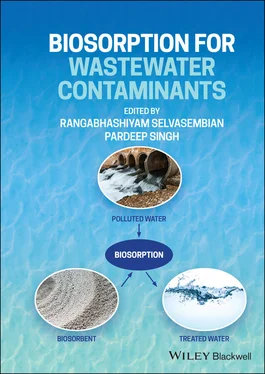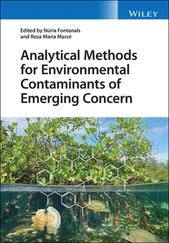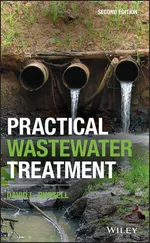65 Oves, M., Khan, M.S., and Zaidi, A. (2013). Biosorption of heavy metals by Bacillus thuringiensis strain OSM29 originating from industrial effluent contaminated north Indian soil. Saudi Journal of Biological Sciences 20 (2): 121–129. doi:10.1016/j.sjbs.2012.11.006.
66 Oyedepo, T.A. (2011). Biosorption of lead (II) and copper (II) metal ions on Calotropisprocera (Ait.). Science Journal of Pure and Applied Chemistry 1: 1–7.
67 Park, D., Yun, Y.‐S., and Park, J.M. (2010). The past, present, and future trends of biosorption. Biotechnology and Bioprocess Engineering 15 (1): 86–102. doi:10.1007/s12257‐009‐0199‐4.
68 Park, J.K., Lee, J.W., and Jung, J.Y. (2003). Cadmium uptake capacity of two strains of Saccharomyces cerevisiae cells. Enzyme and Microbial Technology 33 (4): 371–378. doi:10.1016/S0141‐0229(03)00133‐9.
69 Pehlivan, E., Altun, T., and Parlayici, S. (2012). Modified barley straw as a potential biosorbent for removal of copper ions from aqueous solution. Food Chem 135: 2229–2234.
70 Prasad, K.S., Srivastava, P., Subramanian, V., and Paul, J. (2011). Biosorption of As(III) ion on Rhodococcus sp. WB‐12: biomass characterization and kinetic studies. Separ Sci Technol 46: 2517–2525.
71 Quiton, K.G., Doma, B., Futalan, C.M. et al. (2018). Removal of chromium(VI) and zinc(II) from aqueous solution using kaolin‐supported bacterial biofilms of Gram‐negative E. coli and Gram‐positive Staphylococcus epidermidis. Sustainable Environment Research 28 (5): 206–213. doi:10.1016/j.serj.2018.04.002.
72 Rajapaksha, A.U., Vithanage, M., Ahmad, M. et al. (2015). Enhanced sulfamethazine removal by steam‐activated invasive plant‐derived biochar. Journal of Hazardous Materials 290: 43–50. doi:10.1016/j.jhazmat.2015.02.046.
73 Rana, R.S., Singh, P., Kandari, V. et al. (2017). A review on characterization and bioremediation of pharmaceutical industries’ wastewater: an Indian perspective. Applied Water Science 7 (1): 1–12. doi:10.1007/s13201‐014‐0225‐3.
74 Rani, M.J., Hemambika, B., Hemapriya, J., and Kannan, V.R. (2010). Comparative assessment of heavy metal removal by immobilized and dead bacterial cells: A biosorption approach. African Journal of Environmental Science and Technology 4 (2): 077–083.
75 Remacle, J. (1990). The cell wall and metal binding. In: Biosorption of Heavy Metals (ed. B. Volesky), 83–92. Boca Raton, Florida: CRC Press.
76 Rezaei, H. (2016). Biosorption of chromium by using Spirulina sp. Arabian Journal of Chemistry 9 (6): 846–853. doi:10.1016/j.arabjc.2013.11.008.
77 Romera, E., González, F., Ballester, A. et al. (2007). Comparative study of biosorption of heavy metals using different types of algae. Bioresource Technology 98 (17): 3344–3353. doi:10.1016/j.biortech.2006.09.026.
78 Saeed, A., Iqbal, M., and Akhtar, M.W. (2005). Removal and recovery of lead (II) from single and multiple (Cd, Ni, Cu, Zn) solutions by crop milling waste (black gram husk). J Hazard Mater 117: 65–73.
79 Saranya, K., Sundaramanickam, A., Shekhar, S. et al. (2018). Biosorption of multi‐heavy metals by coral associated phosphate solubilising bacteria Cronobacter muytjensii KSCAS2. Journal of Environmental Management 222: 396–401. doi:10.1016/j.jenvman.2018.05.083.
80 Sarı, A., Uluozlü, Ö.D., and Tüzen, M. (2011). Equilibrium, thermodynamic and kinetic investigations on biosorption of arsenic from aqueous solution by algae (Maugeotia genuflexa) biomass. Chemical Engineering Journal 167 (1): 155–161. doi:10.1016/j.cej.2010.12.014.
81 Sayyadi, S., Ahmady‐Asbchin, S., Kamali, K. et al. (2017). Thermodynamic, equilibrium and kinetic studies on biosorption of Pb +2 from aqueous solution by Bacillus pumilus sp. AS1 isolated from soil at abandoned lead mine. Journal of the Taiwan Institute of Chemical Engineers 80: 701–708. doi:10.1016/j.jtice.2017.09.005.
82 Shamim, S. (2018). Biosorption of heavy metals. In: Biosorption (ed. J. Derco and B. Vrana), 21–49. InTech.
83 Shamim, S. and Rehman, A. (2014). Physicochemical surface properties of Cupriavidus metallidurans CH34 and Pseudomonas putida mt2 under cadmium stress: Physicochemical surface properties under Cd stress. Journal of Basic Microbiology 54 (4): 306–314. doi:10.1002/jobm.201200434.
84 Shamim, S., Rehman, A., and Qazi, M.H. (2014). Cadmium‐Resistance Mechanism in the Bacteria Cupriavidus metallidurans CH34 and Pseudomonas putida mt2. Archives of Environmental Contamination and Toxicology 67 (2): 149–157. doi:10.1007/s00244‐014‐0009‐7.
85 Siñeriz, M.L., Kothe, E., and Abate, C.M. (2009). Cadmium biosorption by Streptomyces sp. F4 isolated from former uranium mine. Journal of Basic Microbiology 49 (S1): S55–S62. doi:10.1002/jobm.200700376.
86 Srivastava, S., Agrawal, S.B., and Mondal, M.K. (2016). Animal wastes: an alternative adsorbent for removal of toxic heavy metals from industrial wastewater. Journal of Scientific Research 60: 65–72.
87 Subbaiah, M.V. and Yun, Y.S. (2013). Biosorption of Nickel(II) from aqueous solution by the fungal mat of Trametes versicolor (rainbow) biomass: equilibrium, kinetics, and thermodynamic studies. Biotechnology and Bioprocess Engineering 18 (2): 280–288. doi:10.1007/s12257‐012‐0401‐y.
88 Subhashini, S., Kaliappan, S., and Velan, M. (2011). Removal of heavy metal from aqueous solution using Schizosaccharomycespombe in free and alginate immobilized cells. In: 2nd International Conference on Environmental Science and Technology IPCBEE, vol. 6: V2107–V2111. IACSIT Press.
89 Trinelli, M.A., Areco, M.M., and dos Santos Afonso, M. (2013). Co‐biosorption of copper and glyphosate by Ulva lactuca. Colloids and Surfaces B: Biointerfaces 105: 251–258. doi:10.1016/j.colsurfb.2012.12.047.
90 Veglio, F. and Beolchini, F. (1997). Removal of metals by biosorption: A review. Hydrometallurgy 44: 301–316.
91 Vieira, R.H. and Volesky, B. (2000). Biosorption: A solution to pollution? International Microbiology 3: 17–24.
92 Vijayaraghavan, K., Palanivelu, K., and Velan, M. (2006). Biosorption of copper (II) and cobalt (II) from aqueous solutions by crab shell particles. Bioresource Technology 97: 1411–1419.
93 Viraraghavan, T. and Srinivasan, A. (2011). Fungal biosorption and biosorbents. In: Microbial Biosorption of Metals (ed. Kotrba, M. Mackova, and T. Macek), 143–158. Dordrecht: Springer Netherlands. doi:10.1007/978‐94‐007‐0443‐5_6.
94 Wan Ngah, W.S. and Hanafiah M.A.K.M. (2008). Removal of heavy metal ions from wastewater by chemically modified plant wastes as adsorbents: a review. Bioresource Technol 99: 3935–3948.
95 Wang, J. and Chen, C. (2006). Biosorption of heavy metals by Saccharomyces cerevisiae: A review. Biotechnology Advances 24 (5): 427–451. doi:10.1016/j.biotechadv.2006.03.001.
96 Wilson, K., Yang, H., Seo, C.W., and Marshall, W.E. (2006). Select metal adsorption by activated carbon made from peanut shells. Biores Technol 97: 2266–2270.
97 Zhang, L., Xia, W., Teng, B. et al. (2013). Zirconium cross‐linked chitosan composite: Preparation, characterization and application in adsorption of Cr (VI). Chem. Eng. J. 229: 1–8.
Конец ознакомительного фрагмента.
Текст предоставлен ООО «ЛитРес».
Прочитайте эту книгу целиком, купив полную легальную версию на ЛитРес.
Безопасно оплатить книгу можно банковской картой Visa, MasterCard, Maestro, со счета мобильного телефона, с платежного терминала, в салоне МТС или Связной, через PayPal, WebMoney, Яндекс.Деньги, QIWI Кошелек, бонусными картами или другим удобным Вам способом.












